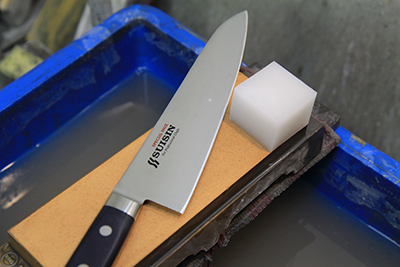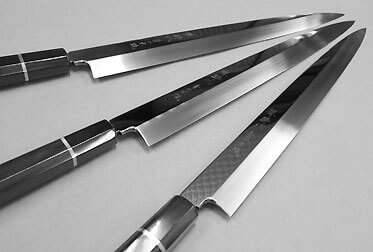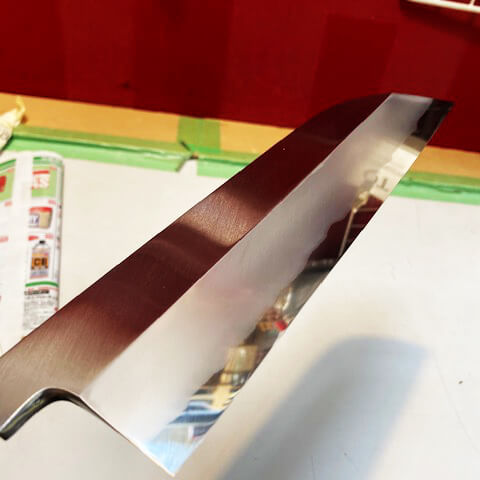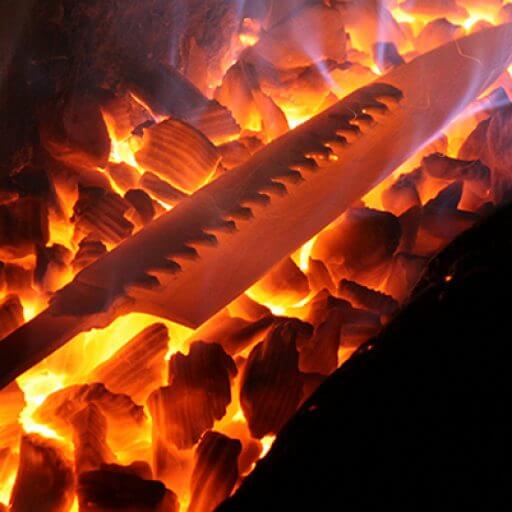Harder is better.
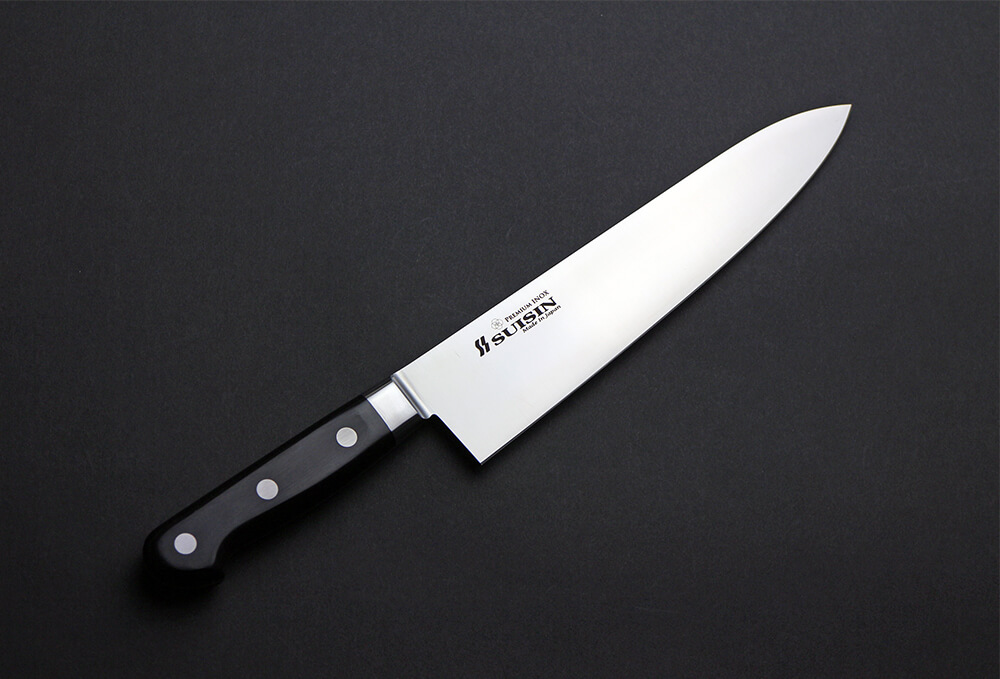
During New Year’s, I had a chance to talk to my mother. It turns out she’s looking for a gift for a friend and asked if a good knife might be a good option.
Me: ‘How about the SUISIN INOX Gyuto? It’s sharp and easy to sharpen!’
Mother: ‘It does cut well, but it’s a bit soft…’
From this conversation, it became apparent that housewives don’t often consider sharpening knives. When thinking about knives for work, cutting and sharpening go hand in hand. The focus is on being easy to sharpen and having a good cutting edge. However, housewives don’t often think about sharpening.
(Is it just my mother? )
It’s true that harder steel retains its edge better and doesn’t round as easily. Even if it’s a bit more prone to chipping, it will keep cutting in some areas, albeit not as sharp. This means you have a sharpening interval of about once a month instead of every two days.
So, I realized that knives for home use are usually made harder (^^)b. For those who sharpen their knives, using the same knives at home as the ones used at work can provide a fantastic cutting experience. But for those who don’t think about sharpening, a harder knife is more suitable. Prioritizing longevity of sharpness over immediate sharpness!
When a hard knife doesn’t cut well, it’s usually because the edge has rounded in its hard state… making sharpening a real challenge. If it’s chipped, it takes a lot of time to sharpen that specific part.
My mother said to me, ‘You’re a knife professional! Treat it as training and sharpen it for me!!’
And so, armed with this newfound knowledge, I spent the day doing some inventory organization at work. Various interesting things came up, so until next time!
hibishugyo
2007-01-05

